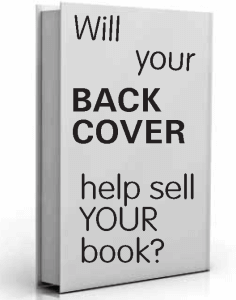 Thanks to award-winning marketing strategist Catherine Foster, executive publisher/CEO of BlueSky Publisher Partner for this guest post!
Thanks to award-winning marketing strategist Catherine Foster, executive publisher/CEO of BlueSky Publisher Partner for this guest post!
This is an exciting time to be an author because the playing field is finally leveled – you can get your book published! You don’t have to beg an agent to take you on and you don’t have to deal with those heartbreaking rejection letters. There’s no longer a stigma associated with self-publishing — in fact, many of my authors say it’s the very best option.
CreateSpace was the No. 1 print self-publisher in 2011 with 39 percent of the market, and Smashwords was No. 1 for e-books, with 47 percent, according to Bowker’s most recent information. However, while most readers no longer pay attention to where a book was published, authors should know they do pay attention to what it looks like.
The most important overlooked element is not the front cover but the back cover. That’s where potential readers will spend the most time deciding if they want to buy your book.
Browsers spend 10 to 15 seconds reading the back cover. If you want to keep their interest, you should follow these four basic rules of book marketing:
- Know your audience: You have to consider their point of view when you decide what to say on the back cover, and you need to know who they are in order to figure that out. This is your 10-second commercial, so be sure you give your audience what they’re looking for!
- Keep it simple: Many authors try to cram too much information on the back cover in the hopes that something will pique the reader’s interest. But too much information overwhelms browsers and their brain becomes sluggish. Rather than read everything, they read nothing and walk away. Treat the text on your back cover like poetry and keep the message condensed and poignant.
- Choose the right fonts: Certain font styles appeal to different audience demographics. Whether your audience is mostly teens or college students, middle-aged adults or seniors, they’ll respond differently to the looks of different type faces. Choosing small red fonts on your cover is the worst thing you can do if your market is the reader older than 55 because red is one of the hardest colors to read when aging affects vision. Also, your fonts shouldn’t blend in with the colors on your back cover, or the words lose value to the reader.
- Typos will kill your book sale: If your back cover has a typo, even a small one such as a redundant word or two words with no space between them, it will doom your book. Authors are indeed “judged like a book by its cover” and readers will assume that your book wasn’t edited and that it will be full of errors. One of the most frustrating things for readers is finding typos in a book. It dilutes the meaning of the content, distracts them from reading, and most importantly, makes the author look amateurish. Even if the only typo in your book is the one on your back cover, readers will make critical assumptions based on that one fatal flaw.
Have your book professionally edited, cover to cover. No matter how good of an editor you are, you’re likely to read right over your own mistakes. There’s a reason surgeons don’t operate on themselves; the same is true for authors editing themselves.
 Catherine Foster has been a marketing strategist for 25 years. She is the executive publisher/CEO of BlueSky Publishing Partner; founder and director of marketing for Blossom Marketing & Publishing; founder and publisher of The Positive Times Newspaper; and co-founder of The Positive Thinkers Network. She is a three-time recipient of the Ohio Business Woman of the Year by the NRCC for her outstanding business leadership and entrepreneurial spirit. Additional awards include the 2005 Ronald Reagan Award of Entrepreneurial Excellence and the 2006 Congressional Medal of Distinction.
Catherine Foster has been a marketing strategist for 25 years. She is the executive publisher/CEO of BlueSky Publishing Partner; founder and director of marketing for Blossom Marketing & Publishing; founder and publisher of The Positive Times Newspaper; and co-founder of The Positive Thinkers Network. She is a three-time recipient of the Ohio Business Woman of the Year by the NRCC for her outstanding business leadership and entrepreneurial spirit. Additional awards include the 2005 Ronald Reagan Award of Entrepreneurial Excellence and the 2006 Congressional Medal of Distinction.

Thanks Shari, We tried to keep our back cover simple but enough to grab the readers attention. We didn’t use a professional picture but one that we thought made people smile and showed our character. We used an editor but we ended up editing her.
Thank you for your terrific article and I totally agree with it. I reckon a two paragraph synopsis, cleverly written is all that’s needed. I am Australian and we don’t put everything that happens in the plot as it appears the Americans do, so this is where the weakness lies – as you have pointed out. Just enough to give the reader an idea of what the novel is about and to titillate!!!
Thanks for weighing in, Diana and yes, less is more! We can liken it to movie trailers – if the trailer gives it all away we think, “well, don’t need to see that one, eh?” We’ve saved ourselves a LOT on movies that way, lol…
Excellent advice. I love my back cover because my editor found a great picture of brownies (the novel is about a caterer) and I used a professional picture of myself. I do have a 2 paragraph synopsis and I wonder now if that’s too much. I’ll take your article into consideration going forward.
Thanks, Carol and two para’s probably isn’t too much – the big question is if you can make those brownies “scratch ‘n sniff” Happy to hear you have a professional photo of yourself, too – a lot of authors miss this – that they are the brand and the books are the products. Establishing the brand early is smart authorpreneurship!